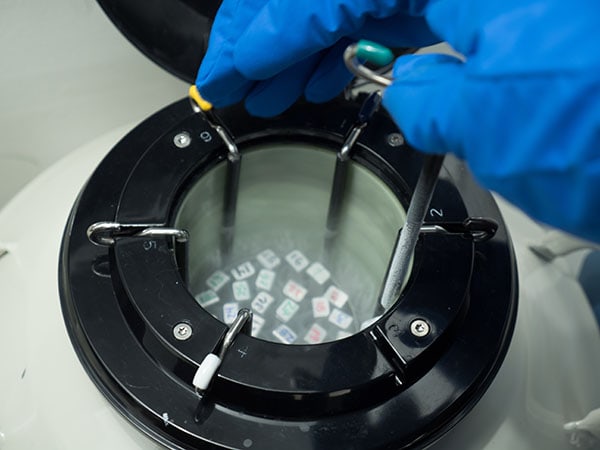Embryo bank
Since 1984, the year in which the first baby was born through the cryopreservation of embryos, this method has been used by millions of couples around the world in assisted reproduction treatments in the search for long-awaited parenthood.

What is an embryo bank for?
This procedure aims to have embryos available to be transferred after thawing in a subsequent menstrual cycle, natural or artificially prepared with hormones, which increases the percentage of pregnancy per cycle of stimulation without repeating long and expensive stimulation cycles with gonadotrophins and oocyte aspiration. These embryos result from fertilization in the laboratory or In Vitro procedures, a treatment also available at InSer at all the main locations in the country.
In addition, it avoids the disposal of supernumerary embryos and can prevent the transfer of a high number of embryos, thus reducing the risk of multiple pregnancies.
It is also an alternative when there are adverse maternal conditions for the embryonic transfer, as is the case with severe ovarian hyperstimulation.
What are the requirements for accessing the embryo bank?
It is required for both women and men to have HIV antibody testing, Hepatitis B surface antigen, Hepatitis C antibodies, serology, and IgG/IgM for cytomegalovirus and Chlamydia Trachomatis. In addition, the consent and contract of embryo storage must be completed and signed to avoid potential problems concerning the property and disposition of the embryos, which inevitably occur once a member of the couple is missing or upon the dissolution of the couple.
The embryo bank can be your great ally in achieving a short- and medium-term pregnancy.
The embryo bank can be your great ally when it comes to achieving a short- and medium-term pregnancy.
Contact us in our lines:
- Medellín: +57(4) 268 80 00
- Bogotá: +57(1) 746 98 69
- Cartagena: +57(5) 693 04 34
- Pereira: +57(6) 340 17 09
- Whatsapp: +57 316 3033866




